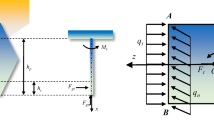Abstract
Monolayer brazed grinding wheels were prepared using polycrystalline diamond grains, Ni-Cr-B-Si brazing alloy, and commercial Q235A steel with the brazing temperature 1000 °C and the holding time 5 min. The microstructure and element distribution of joint interface was studied through scanning electron microscope and energy dispersive X-ray spectroscope, respectively. Grinding performance of wheels was evaluated during grinding alumina specimen. The fracture of polycrystalline diamond grains with the embedding depth of 50 and 70 % was studied quantitatively. The results show that good joint interface was formed among polycrystalline diamond grains, Ni-Cr-B-Si brazing alloy, and Q235A steel through element diffusion and chemical reaction during brazing. Chemical resultants Cr3C2 and Cr7C3 formed within joint interface between polycrystalline diamond grain and Ni-Cr-B-Si brazing alloy; meanwhile, the growth of Cr3C2 has an orientation relationship with element arrangement of diamond surface. Compared with single crystal diamond grinding wheel, the polycrystalline diamond grinding wheel has exhibited evident advantages according to the grinding force and force ration (tangential grinding force Ft / normal grinding force Fn). The Fn and Ft is 21.69 and 7.23 N with the expositing high of 50 % and 5.16 and 1.72 N with the expositing high of 70 % respectively, when polycrystalline diamond grain fracture takes place. The failure mechanism of brazed polycrystalline diamond grains grinding wheel is diamond fracture.
Similar content being viewed by others
References
Chattopadhyay K, Chollet L, Hintermann HE (1991) Experimental investigation on induction brazing of diamond with Ni-Cr hardfacing alloy under argon atmosphere. J Mater Sci 26:5093–5100
Huang S-F, Tsai H-L, Lin S-T (2004) Effects of brazing route and brazing alloy on the interfacial structure between diamond and bonding matrix. Mater Chem Phys 84:251–258
Tillmann W, Boretius H (2008) Properties of nickel-based brazed joints between diamond and steel for diamond grinding tools. Weld Cut 7:228–235
Chen Y, Fu Y, Su H, Xu J, Xu H (2014) The effects of solders on the morphologies and mechanical properties of brazed diamond grits. Int J Refract Met Hard Mater 42:23–29
Zhou YM, Zhang FL, Fu KX, Wang CY (2009) Brazing of diamond grits with Ag-Cu-Zn alloy activated by Cr or Ti powder under different environments. Int J Precis Technol 1:139–146
Chen JY, Shen JY, Huang H, Xu XP (2010) Grinding characteristics in high speed grinding of engineering ceramics with brazed diamond wheels. J Mater Process Technol 210:889–906
Badger J (2009) Factors affecting wheel collapse in grinding. Ann CIRP 58:307–310
Hwang TW, Fujimoto CJ, Whitenton EP, Malkin S (2000) High speed grinding of silicon nitride with electroplated diamond wheels, part 1: wear and wheel life. J Manuf Sci Eng 122:32–41
Mamalis AG, Grabchenko AI, Fedorvich VA, Grinko SA, Paulmier D, Horvath M (2001) Development of an expert system of diamond grinding of superhard polycrystalline materials considering grinding wheel relief. Int J Adv Manuf Technol 17:498–507
Chen J, Xu X (2014) Tribological characteristics in high-speed grinding of alumina with brazed diamond wheel. Int J Adv Manuf Technol 71:1579–1585
Zhang B, Fu Y (2013) Grinding of brittle materials with brazed diamond grinding wheel. Int J Adv Manuf Technol 67:2845–2852
Artini C, Muolo ML, Passerone A (2012) Diamond-metal interfaces in cutting tools: a review. J Mater Sci 47:3252–3264
Li ZJ, Fang FZ, Gong H, Zhang XD (2013) Review of diamond-cutting ferrous metals. Int J Adv Manuf Technol 68:1717–1731
Klotz UE, Liu C, Khalid FA, Elsener H-R (2008) Influence of brazing parameters and alloy composition on interface morphology of brazed diamond. Mater Sci Eng A 495:265–270
Li BZ, Ni JM, Yang JG (2014) Study on high-speed grinding mechanisms for quality and process efficiency. Int J Adv Manuf Technol 70:813–819
Buhl S, Leinenbach C, Spolenak R (2013) Failure mechanisms and cutting characteristics of brazing single diamond grains. Int J Adv Manuf Technol 66:775–786
Li ZC, Lin B, Xu YS, Hu Y (2002) Experimental studies on grinding forces and force ratio of unsteady-state grinding technique. J Mater Process Technol 129:76–80
Author information
Authors and Affiliations
Corresponding author
Rights and permissions
About this article
Cite this article
Meng, P. Microstructure and performance of monolayer brazed grinding wheel with polycrystalline diamond grains. Int J Adv Manuf Technol 83, 441–447 (2016). https://doi.org/10.1007/s00170-015-7583-3
Received:
Accepted:
Published:
Issue Date:
DOI: https://doi.org/10.1007/s00170-015-7583-3



